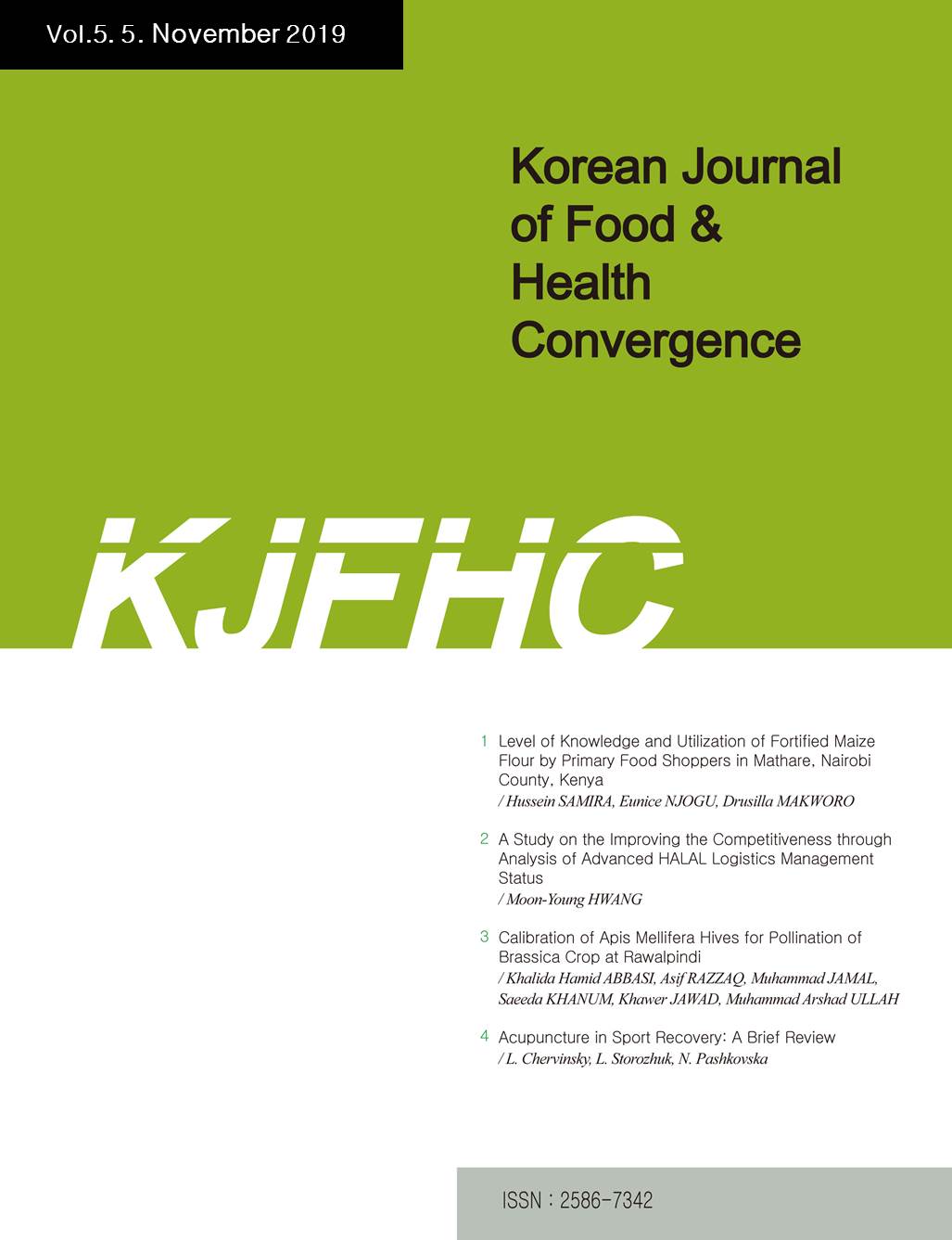 E-ISSN : 2586-7342
E-ISSN : 2586-7342
Vol.7 No.6
Abstract
Premna foetida is a woody plant with short and twisted trunk. P. foetida is a scandent, erect shrub or small tree, thorny on the trunk and large branches. Leaves are opposite or whorled and entire or serrate. Premna foetida is a wild plant locally known as "Daun Sebuas". P. foetida is used for it nutritive and as traditional treatment. The fruit and leaves of P. foetida are prepared for salad. The study aimed at the hydrodistillation and antioxidant activity of leaves, stem-bark and fruits essential oil from Premna foetida Linn, they were analysed by capillary GC and GC-MS. Ninety eight compounds representing 81.68±0.02, 37.31±0.05 and 93.45±0.03 of the isolates of leaves, stem-bark and fruits respectively were identified, the most abundant were α -Duprezianene (77.27±0.03, leaves, α-Gurjunene (36.06±0.05) fruits and Hinesol acetate (77.19±0.03) stem-bark. Components among which sesquiterpenoids dominated. The total volatiles were assayed for antioxidant potentials using 2, 2-diphenyl-1-picrylhydrazyl (DPPH). The total volatiles showed strong activity with IC<sub>50</sub> of 11.74±0.82㎍/ml, 9.63±0.34 ㎍/ml and 49.73±1.12 ㎍/ml for leaves fruits and stem-bark respectively.
Abstract
There are two forms of medicine that have existed over time and are important in the delivery of expert health care. The forms of medicine are traditional and modern medicine. This study was aimed at assessing the awareness and perspective on the use and integration of traditional and modern medicine in a rural area of Sokoto State, Nigeria. Two hundred and seventy-one (271) respondents were recruited and a self-administered questionnaire on the awareness and perspective on use and integration of traditional and modern medicine was used to assess the participant's view. Among the participants, 200(73.8%) were females. The mean±SD age of respondents was 30.55±9.73 years. 80.8% of the respondents were aware of traditional medicine while 100% were aware of modern medicine. All respondents prefer modern medicine but about 28.8% support integration of both healthcare services. The results were considered significant when p-value was less than 0.005. There is a statistically significant relationship between the integration of traditional and modern forms of medicine and age, gender, religion, education, ethnicity and occupation but not for marital status. Though all the respondents preferred modern medicine to traditional medicine, some people still feel it will be good to combine both for a better healthcare system.
Abstract
This study investigates the exercise-physiological changes in stages through the movement of the automatic stepper and to analyze the usefulness of the automatic stepper. For 18 male university students, out of 10 levels, 5 level and 10 level of automatic stepper exercise were performed. At each 10, 20, 30 minutes during exercise, 5 and 10 minutes after exercise stop the subjects were examined to analyze the changes in energy consumption after minutes, respiratory exchange rate, heart rate, oxygen consumption per body weight, METs, cumulative energy consumption, and lactic acid to verify the usefulness of the automatic stepper. The mean and standard deviation were calculated using the SPSS, and one-way ANOVA with repeated measure was performed to verify the difference in the mean between time periods. The LSD method was used for the post-hoc test, and the significance level was set to α = .05. There were no significant changes in both 5 and 10 level, but the cumulative energy consumption over time increased significantly. In addition, as a low-intensity exercise intensity is shown, a low increase in lactic acid indicated a safe exercise level. In future studies, in-depth studies of various variables through regular exercise programs are needed for those who need safe exercise.
